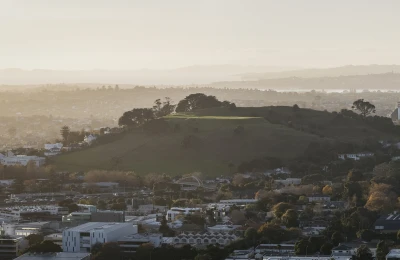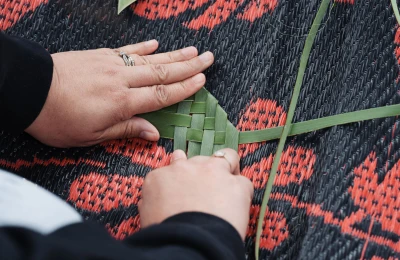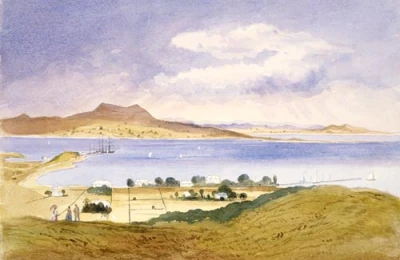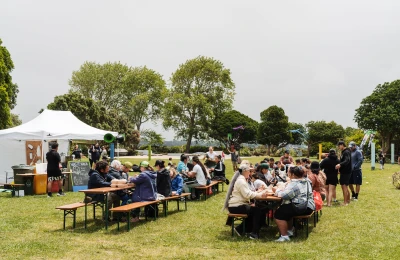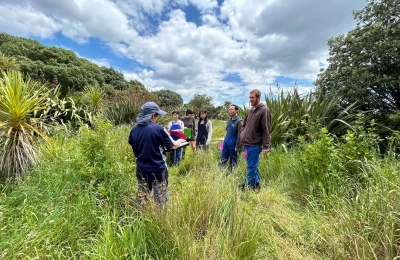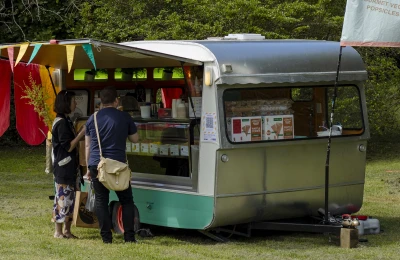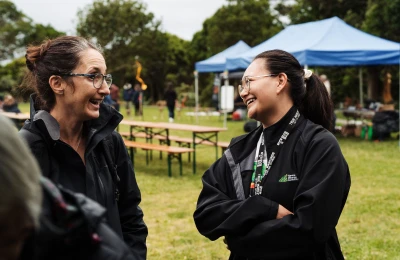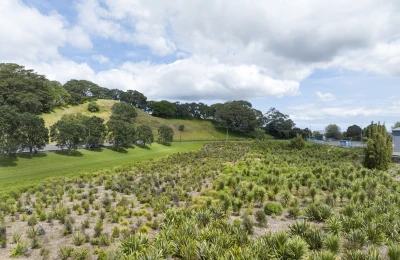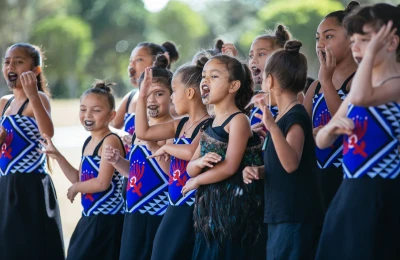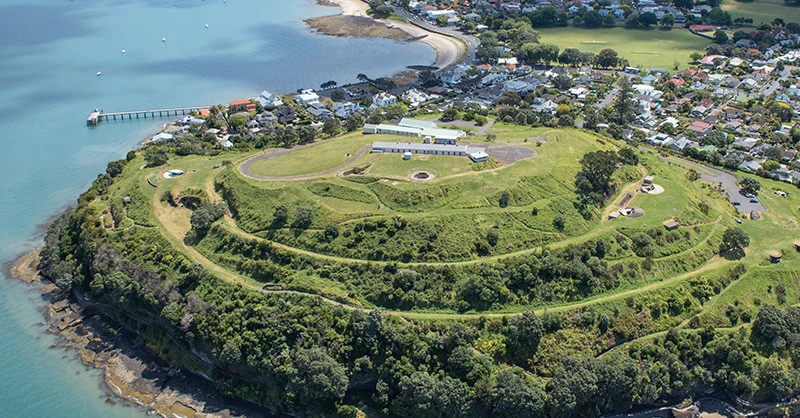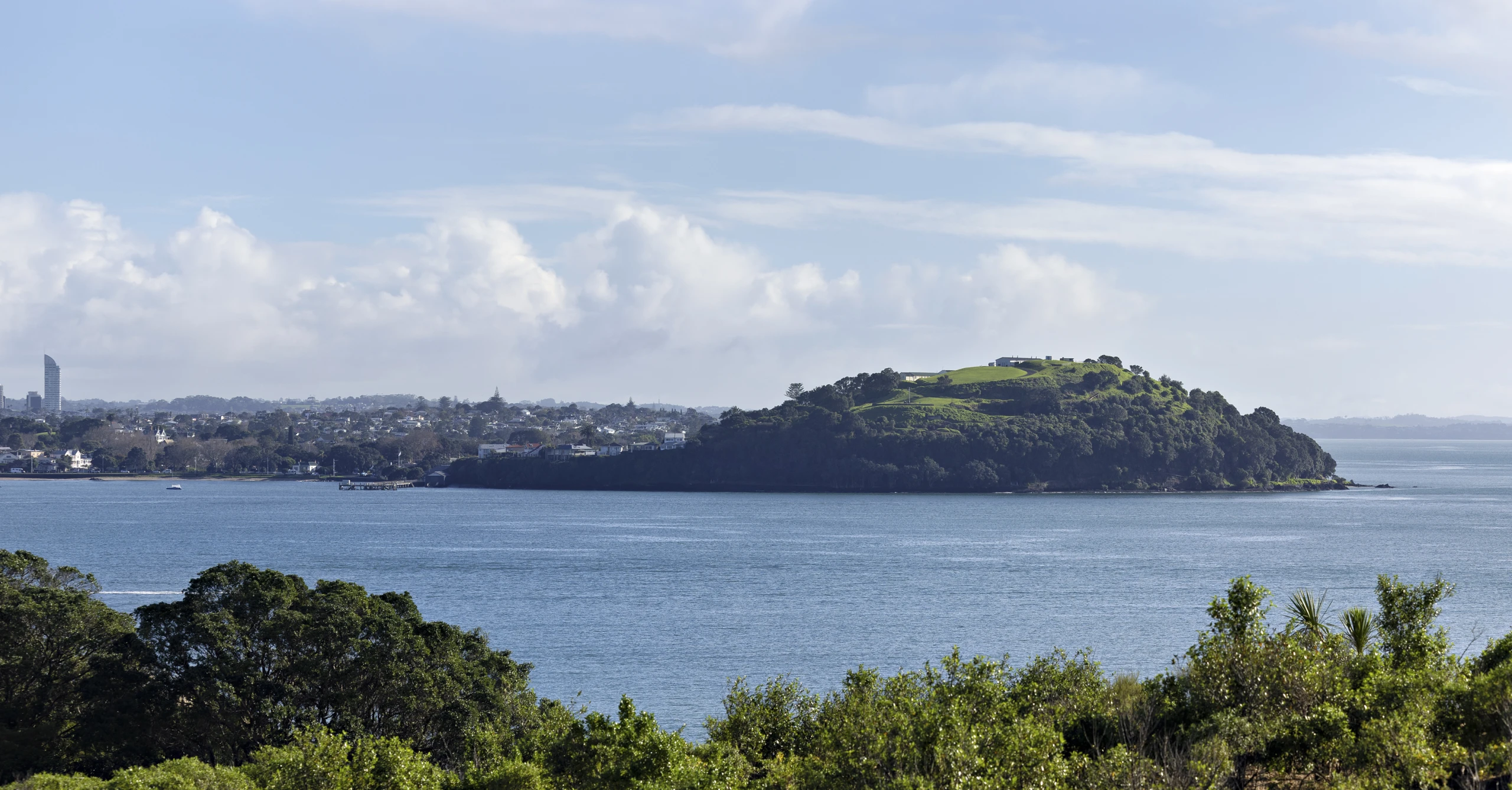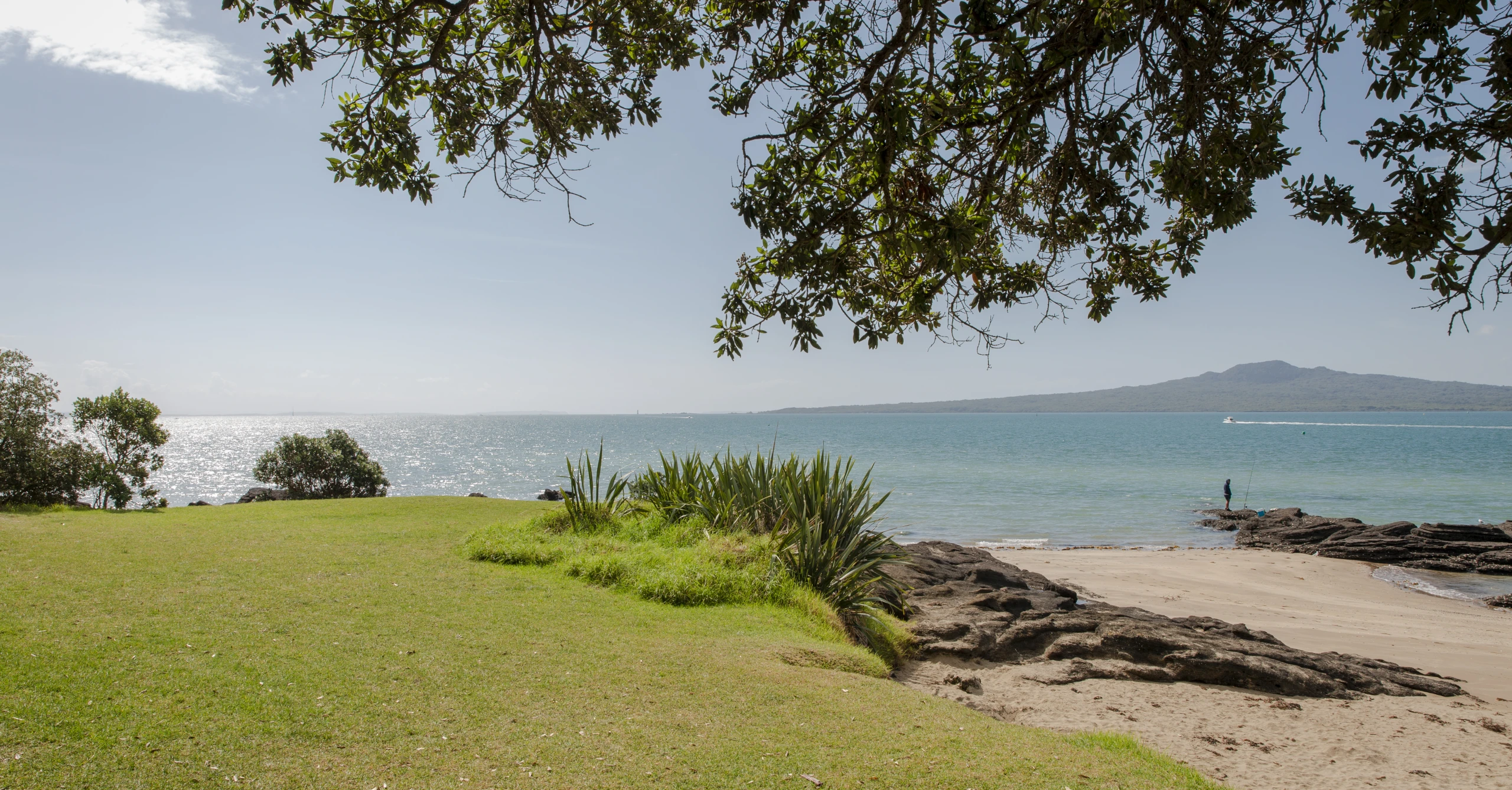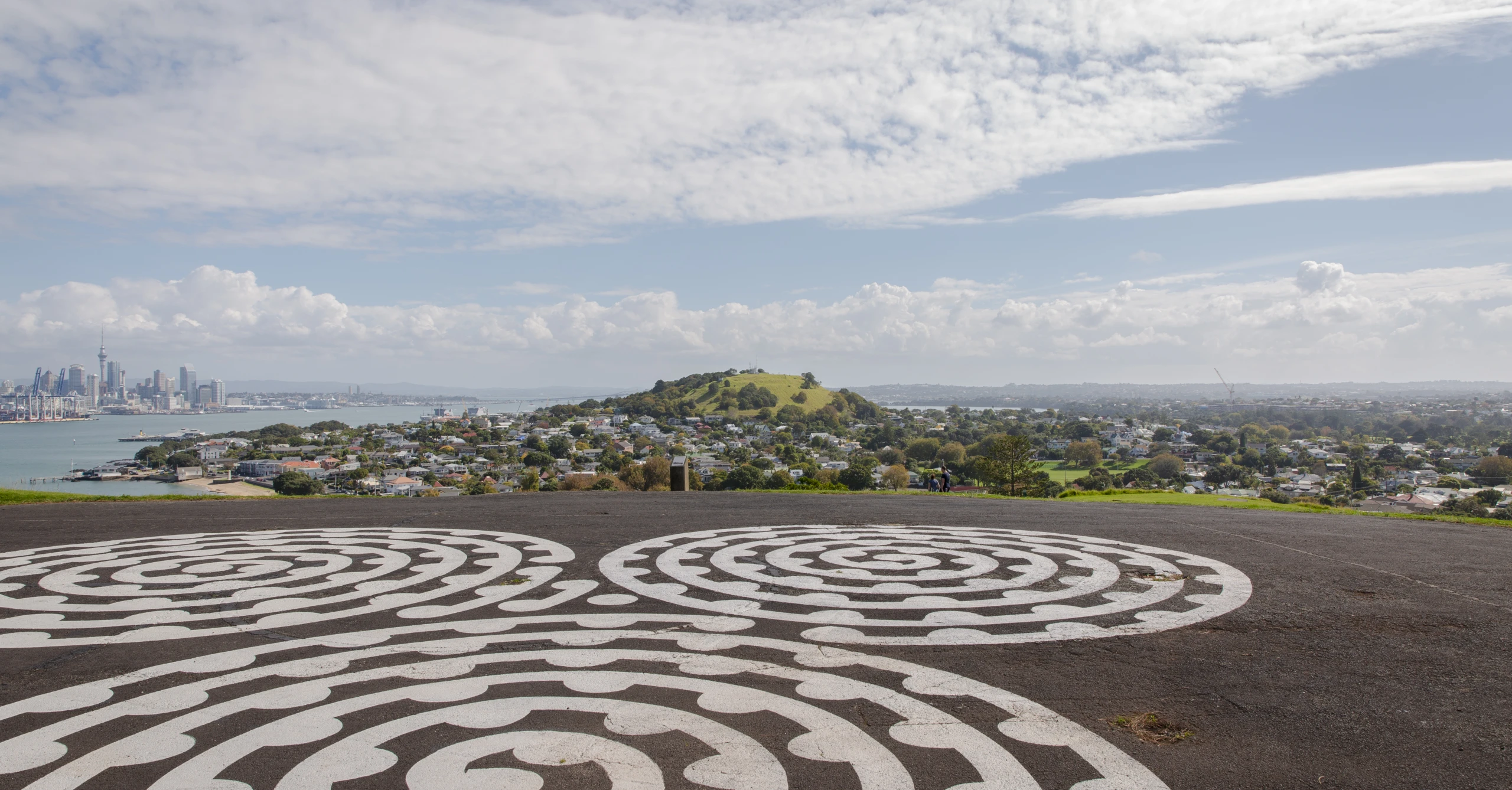PĀ
The name Maungauika, meaning the 'Mountain of Uika', traces back to ancestors who occupied it about 800 years ago.
The peninsula we know in modern times as Devonport was one of the earliest parts of Tāmaki Makaurau / Auckland to be settled by early Māori. The volcanic soils, the rich marine environment and the prominent Maunga (mountains) provided an ideal location for settlement.
The main pā (fortified settlement) was at nearby Takarunga / Mt Victoria. Maungauika was only moderately terraced and the lower slopes used for the growing of crops. Remnants of historic gardens on these slopes were evident at the time Europeans arrived in Auckland, but are since lost. European visitors in the 1850's describe a Māori settlement at the foot of Maungauika with organised gardens and areas for processing fish.
Despite the height and highly strategic location of Maungauika, there are no historic trenches or other earthworks for defence as prominent on other Maunga.
RECENT HISTORY
The strategic location of Maungauika / North Head meant that it was an important coastal defence site from the earliest colonial period.
Fears of a Russian invasion of the Pacific led to the installation of a muzzle-loader fort in 1885. Between 1888 and 1914 some of the buildings housed prisoners who excavated many of the tunnels that link the batteries and their service facilities.
For a time, Maungauika / North Head was known as Fort Cautley, named in 1885 after Major Cautley of Royal Engineers, but this name has now lapsed. During the second world war, defences were further developed.
Defence forces withdrew completely from Maungauika / North Head in the 1990s.
GEOLOGY
Maungauika / North Head is one of the oldest volcanic cones in the Auckland volcanic field - formed in a series of volcanic eruptions over 50,000 years ago.
The eruption was explosive, interspersed with eruptions of fine scoria. This ash and scoria built up a small tuff cone around a central explosion crater that was completely filled and buried by the later scoria cone. The outward-sloping tuff beds form the shore platforms around southern, eastern and northern sides of the headland.
Geologists suggest that about 7000 years ago Maungauika / North Head was likely an island. Eventually the shallow gap between Cheltenham Beach and Torpedo Bay built up with sand and shell, linking Maungauika to the North Shore.
TRANSFER OF ADMINISTRATION
Administration of Maungauika / North head was transferred to the Tūpuna Maunga Authority from the Department of Conservation in January 2019.
The transfer was welcomed by the Authority as a completion of the Ngā Mana Whenua o Tāmaki Makaurau Collective Redress Act 2014 which saw ownership of fourteen Tūpuna Maunga, including Maungauika, returned to the 13 iwi / hapū of Tāmaki. Administration of Maungauika had remained with the Department of Conservation as an interim step.
The transfer has allowed a focused effort on restoring Maungauika consistent with the other Maunga - forever valued, restored, protected and managed as the taonga tuku iho (treasures handed down the generations) that they are.
RESTORATION OF HISTORIC STRUCTURES
The construction of the vast network of tunnels and military structures on Maungauika dates back to the late 1800s. Given the age of the structures, strengthening work is required to preserve them as best as possible.
Engineers have identified several areas that, due to natural corrosion, need additional strengthening to maintain the integrity of the structures into the future. Core testing has also been carried out, to help determine the future programme of general upkeep.
Work to maintain parts of the historic defence tunnels and structures on Maungauika is currently underway. The work includes reinforcing some of the original iron struts within the concrete structures and giving additional strength to lintels above doorways.
The Tūpuna Maunga Authority is working with heritage architects to ensure that remedial works in the tunnels do not compromise the heritage values of the structures, and that work followed best practice for managing heritage assets.
SUMMIT ROAD OPENING HOURS
Vehicle gate:
6 am – 8 pm
Pedestrian gate:
6 am – 10 pm
DOG RULES
Under control ON leash.
Please make sure to pick up after your dogs and dispose of waste in rubbish bins.
LOCATION
18 Takarunga Road, Devonport, Auckland
